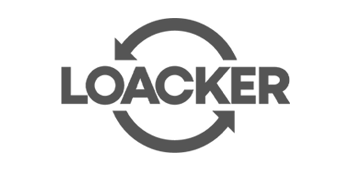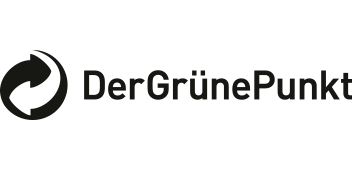Refuse-derived
fuels (SRF | RDF)
Sustainable energy from waste
Household, commercial and industrial waste can be processed into high-quality refuse-derived fuels (SDF | RDF). These fuels play a crucial role in energy production and contribute to reducing landfill waste.
CUTMETALL products support waste-to-energy manufacturers because we offer replacement and wear parts that are specially optimized for waste fuel production.
View our products
CUTMETALL products support waste-to-energy manufacturers because we offer replacement and wear parts that are specially optimized for waste fuel production.
View our products
+ 6.5M ↓
Over 6.5 million tons of household, commercial, and industrial waste are processed into high-quality alternative fuels in Germany alone every year.
52% ↓
52% of the thermal energy requirements of the European cement industry alone are covered by SDF | RDF.
100% ↓
It's 100% sure: Alternative fuels play a decisive role in energy production and the reduction of landfill waste.
Efficient SRF Processing with CUTMETALL
CUTMETALL provides high-quality knives, knife holders, and screens for solid recovered fuel (SRF) production. Our specially engineered wear parts ensure that machines run efficiently, enabling customers to produce high-grade fuel effectively.
What we offer for SRF processing:
- Tailored solutions: Custom-optimized cutting tools, such as our exclusive concave knife.
- Process analysis & consulting: We evaluate your production processes and help you choose the best components.
- Minimized downtime: Wear parts perfectly matched to your machine and material.
- Fast availability: Many replacement parts are available and ready to order in our online shop.
Register for the store

An insight into substitute fuel production


Ready to take the next step? Let’s get started!
Curious about how refuse-derived fuel (RDF) is produced? Keep reading to discover the full process and key benefits. Scroll down

So, what exactly are Solid Recovered Fuels (SRF)?
Solid Recovered Fuels (SRF) are produced by processing specific types of waste into combustible materials. These fuels can substitute fossil energy sources in industrial facilities such as cement kilns or power plants. They offer several key advantages:
- Replacement of fossil fuels like coal, oil, and natural gas
- Utilization of non-recyclable waste fractions
- Conservation of natural resources
- Reduction in CO₂ emissions
- Decrease in overall waste volume
- Long-term disposal security for waste producers
- Reliable fuel supply for SRF-consuming industries
Challenges in SRF Production
SRF production comes with its share of challenges. The feedstock — meaning the waste material used to generate the fuel — varies greatly in composition. Whether it's sorting residues, municipal solid waste, or industrial production waste, each input requires tailored adjustments to the machinery. This flexibility is essential to ensure the resulting fuel meets the required quality specifications.
Wear parts play a particularly critical role here. Machine knives and screens, which are responsible for shredding and separating the waste, must be replaced regularly. The reason: The hardness and texture of the input material vary, leading to rapid wear. To maintain the high quality of the final product, it’s vital that these components remain in peak condition. Regular maintenance and fine-tuning of the machines are essential to meet the expectations of cement and power plants.
Wear parts play a particularly critical role here. Machine knives and screens, which are responsible for shredding and separating the waste, must be replaced regularly. The reason: The hardness and texture of the input material vary, leading to rapid wear. To maintain the high quality of the final product, it’s vital that these components remain in peak condition. Regular maintenance and fine-tuning of the machines are essential to meet the expectations of cement and power plants.


The complex production process is divided into several stages.
How Are Solid Recovered Fuels Produced?
What Types of Waste Are Suitable for SRF Production?
SRF (Solid Recovered Fuel) can be produced from a wide range of waste materials — especially those with a high calorific value:
- Commercial and industrial waste
- Manufacturing waste
- Packaging waste
- Municipal solid waste (particularly high-energy fractions)
- Bulky waste
- Sewage sludge
- Wood waste
- Plastics
- Textiles


How Do Solid Recovered Fuels Impact Waste Management and Resource Cycles?
Impact on Waste ManagementUsing SRF offers several benefits for waste management. First, it reduces the volume of waste sent to landfills. Second, by converting otherwise non-recyclable waste into energy, it helps cut down on the use of fossil fuels in industry. However, there are also challenges: the availability of SRF could theoretically lead to reduced investment in recycling technologies. Additionally, there is a risk that potentially recyclable materials might be incinerated.
Impact on Resource Cycles
In sectors like the cement industry, the use of SRF shows clear advantages for resource efficiency. For example, in Austria, SRF has replaced around 1.4 million tons of coal annually. Co-processing also reduces the need for virgin raw materials, as up to 17% of SRF input can be used as a material component in the process.
Long-Term Effects
The long-term effects of SRF use on the availability of recyclable materials are not yet fully understood. It is therefore essential to strike a balance between energy recovery and material recycling. Priority should always be given to reuse and recycling, with SRF serving as a last resort when material recovery is no longer feasible. At the same time, sorting and recycling technologies must continue to advance in order to maximise resource efficiency.
When restricted to non-recyclable waste, SRF can be a valuable tool in waste management. However, it is crucial to carefully weigh the balance between energy and material recovery, while continually improving recycling technologies. This is the only way to harness the full potential of SRF while minimising negative impacts on material cycles.
Is Using Solid Recovered Fuels More Environmentally Friendly Than Burning Fossil Fuels Like Coal or Gas?
The use of Solid Recovered Fuels (SRF) offers several clear environmental advantages compared to burning fossil fuels like coal or natural gas.
In summary, when properly handled and quality-controlled, SRF is an environmentally friendly alternative to fossil fuel combustion. It helps reduce CO₂ emissions, conserves valuable resources, and provides a sustainable solution for managing waste that cannot be recycled.
- Reducing CO₂ Emissions
SRF plays a key role in lowering CO₂ emissions by replacing fossil fuels. Since SRF combustion releases less fossil-based CO₂, its use—especially in industries like cement manufacturing—significantly reduces the carbon footprint. Overall, energy recovery from waste results in substantially lower CO₂ emissions than fossil energy sources. - Conserving Resources
SRF also helps preserve valuable resources. These fuels are derived from waste materials that are otherwise difficult to reuse. Their use reduces dependence on finite and costly fossil fuels, which is particularly important in the face of dwindling global resources. - Efficient Waste Utilization
SRF provides an effective solution for handling non-recyclable waste, such as household, industrial, or commercial refuse. This reduces the volume of material sent to landfills, saving space and lowering greenhouse gas emissions. - Challenges
Of course, using SRF comes with its own challenges. The fuel must consistently meet high quality standards to suit the needs of industrial plants such as cement kilns. Proper processing and continuous monitoring of input materials are essential to prevent harmful emissions.
In summary, when properly handled and quality-controlled, SRF is an environmentally friendly alternative to fossil fuel combustion. It helps reduce CO₂ emissions, conserves valuable resources, and provides a sustainable solution for managing waste that cannot be recycled.
What Are the Political and Regulatory Conditions for SRF?
Political Incentives
While there are no direct subsidies for using SRF, various environmental and climate policy measures create indirect incentives. For example, carbon pricing increases the cost of fossil fuels, making SRF a more attractive alternative. Waste management policies that promote landfill reduction also steer attention toward alternative recovery methods such as SRF. Additionally, the EU Waste Hierarchy, which prioritizes energy recovery over landfilling, supports the use of SRF.
Market-Based Factors
From an economic perspective, SRF use offers clear advantages. Companies can cut costs by replacing expensive fossil fuels with SRF. At the same time, new business models and value creation opportunities are emerging within the waste sector. Another benefit: facilities using SRF can achieve up to 30% higher efficiency compared to traditional waste incineration. However, overall profitability depends heavily on market conditions. Volatile fossil fuel prices can influence SRF’s competitiveness, and strict regulations regarding emissions and fuel quality can result in additional costs.
Hidden Costs and Risks
There are also long-term risks that must be considered. If SRF quality standards are not met, harmful emissions may pose health risks. There’s also the potential for environmental damage if low-grade SRF releases pollutants. Another issue is the possible loss of recycling potential if too many recyclable materials are incinerated instead of being returned to the raw material cycle.
The use of SRF is driven by a mix of economic incentives and political regulation. It offers economic benefits, but also requires strict oversight and quality control to avoid negative consequences. Ultimately, the long-term social cost depends on how effectively SRF usage is regulated and implemented.
While there are no direct subsidies for using SRF, various environmental and climate policy measures create indirect incentives. For example, carbon pricing increases the cost of fossil fuels, making SRF a more attractive alternative. Waste management policies that promote landfill reduction also steer attention toward alternative recovery methods such as SRF. Additionally, the EU Waste Hierarchy, which prioritizes energy recovery over landfilling, supports the use of SRF.
Market-Based Factors
From an economic perspective, SRF use offers clear advantages. Companies can cut costs by replacing expensive fossil fuels with SRF. At the same time, new business models and value creation opportunities are emerging within the waste sector. Another benefit: facilities using SRF can achieve up to 30% higher efficiency compared to traditional waste incineration. However, overall profitability depends heavily on market conditions. Volatile fossil fuel prices can influence SRF’s competitiveness, and strict regulations regarding emissions and fuel quality can result in additional costs.
Hidden Costs and Risks
There are also long-term risks that must be considered. If SRF quality standards are not met, harmful emissions may pose health risks. There’s also the potential for environmental damage if low-grade SRF releases pollutants. Another issue is the possible loss of recycling potential if too many recyclable materials are incinerated instead of being returned to the raw material cycle.
The use of SRF is driven by a mix of economic incentives and political regulation. It offers economic benefits, but also requires strict oversight and quality control to avoid negative consequences. Ultimately, the long-term social cost depends on how effectively SRF usage is regulated and implemented.



















